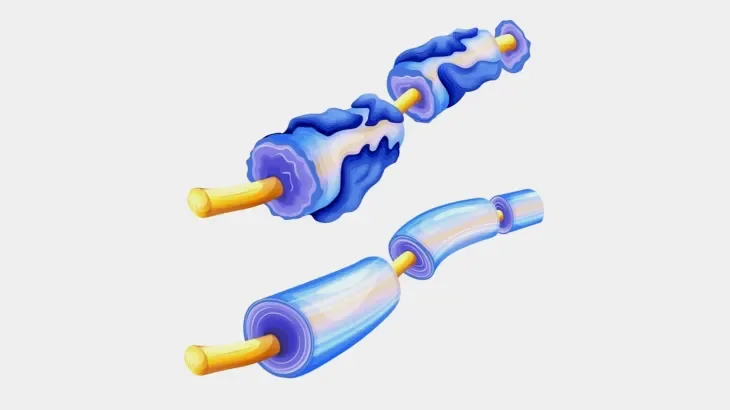
Two New Compounds Herald Hope for Multiple Sclerosis Treatment
SadaNews - A recent study has revealed two new chemical compounds that may open the door to hope for multiple sclerosis (MS) patients, a chronic autoimmune disease in which the immune system mistakenly attacks the myelin sheath—the protective covering surrounding nerve fibers—impeding the transmission of nerve signals between the brain and the body.
The number of people affected by multiple sclerosis worldwide is estimated to be over 2.9 million. Symptoms may manifest as numbness, tingling, and vision disturbances, which can progress to paralysis.
Although treatments are available to reduce inflammation and slow the progression of the disease, medicine has not yet developed a treatment that can restore the damaged myelin sheath or protect nerve cells from damage.
The study was conducted thanks to over a decade of research collaboration between academic teams from the University of California and the University of Illinois in the United States, with results published in the journal Scientific Reports on October 8, and reported by the website EurekAlert.
The new study builds on previous research involving a compound known as Indazole Chloride, which showed promise in enhancing the reformation of the myelin sheath and regulating the immune system in models of mice with multiple sclerosis.
Despite its effectiveness, the compound lacked the necessary pharmaceutical properties and patents required to develop it into a drug that could be used for treating patients.
Identifying the Superior Compound
After screening over 60 compounds derived from Indazole Chloride to find the most effective and safest candidates for investment in new multiple sclerosis treatments, the research team identified two primary compounds designated "K102" and "K110".
Experiments recorded the ability of these two compounds to safely and effectively regenerate myelin around damaged nerve axons and exhibited improved pharmaceutical characteristics in both mouse trials and human cells.
The compound "K102" demonstrated a promising dual capability, as it helped regenerate myelin and regulate immune system activity, making it a strong candidate for treating multiple sclerosis and potentially other neurological diseases.
In contrast, the second compound "K110" exhibited slightly different effects, which may make it suitable for treating other conditions such as spinal cord injuries or certain brain injuries. Work is currently ongoing to study its properties in greater depth.
This discovery represents an important step towards developing treatments that may help repair damaged nerves rather than merely slowing down the deterioration as current therapies do.
The research team hopes to begin human clinical trials soon, which may pave the way for the first innovative treatment to rebuild myelin and improve the lives of multiple sclerosis patients.
While the initial focus of the studies is on this disease, the team believes that the compounds may have future applications in other diseases involving nerve damage, such as stroke and neurodegeneration.
Source: EurekAlert

Avoid These 3 Common Habits That Cause Pancreatic Aging

Discovery of Nose Drops Contributing to the Treatment of a Serious Type of Cancer

HMD Announces Launch of a New Device for Kids

The Best Times to Drink Water During the Day... Discover Them

British Study: Foods Rich in Polyphenols Improve Heart Health

To Treat Obesity.. The World Health Organization Supports the Use of GLP-1 Drugs

Dietary Supplements You Should Avoid Before Sleep

